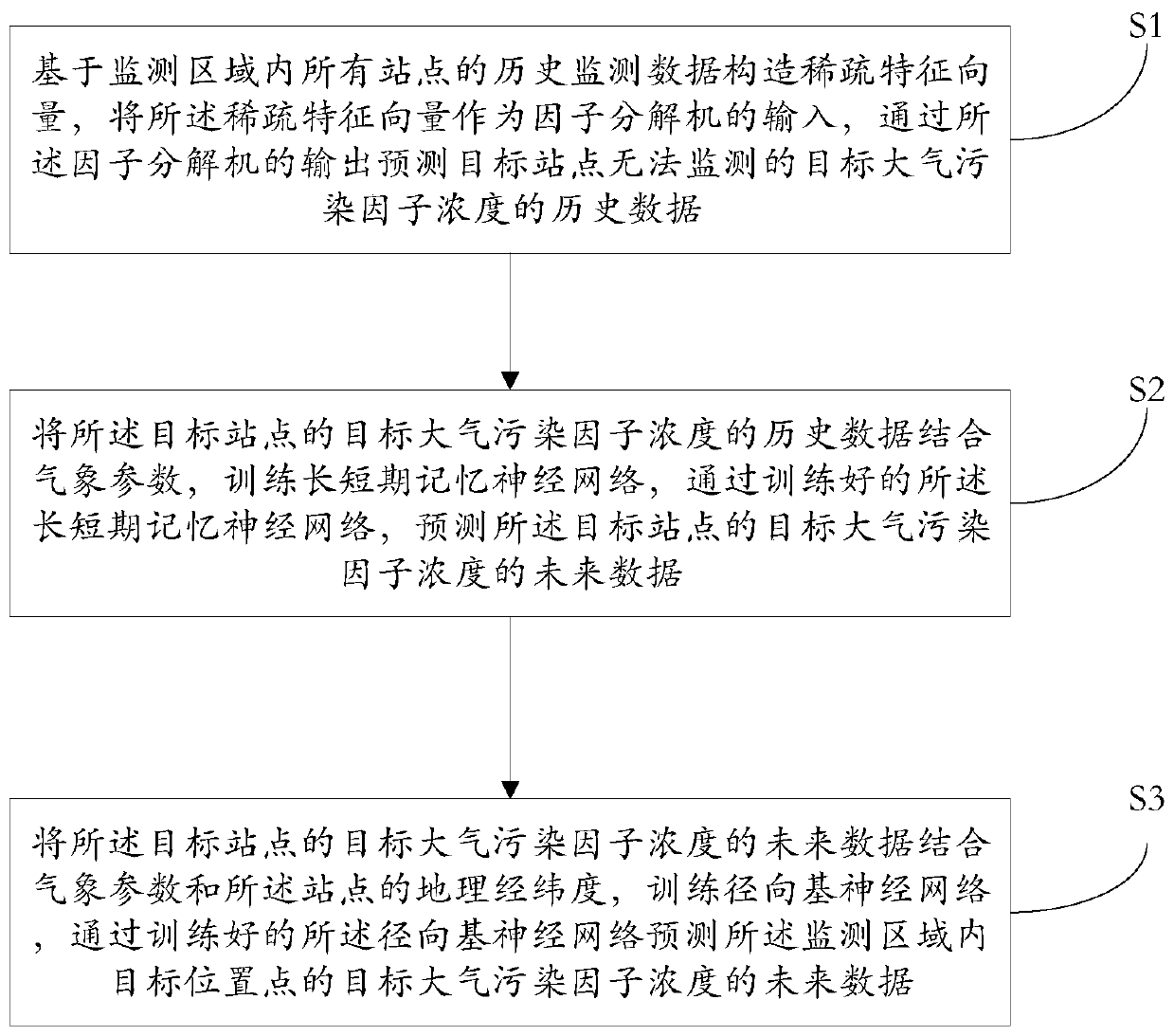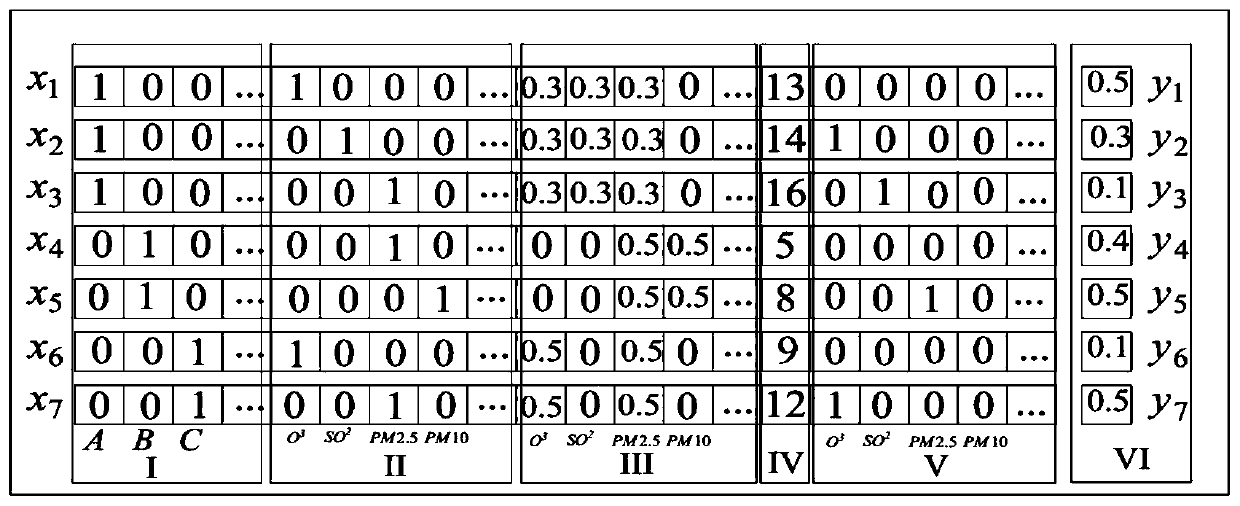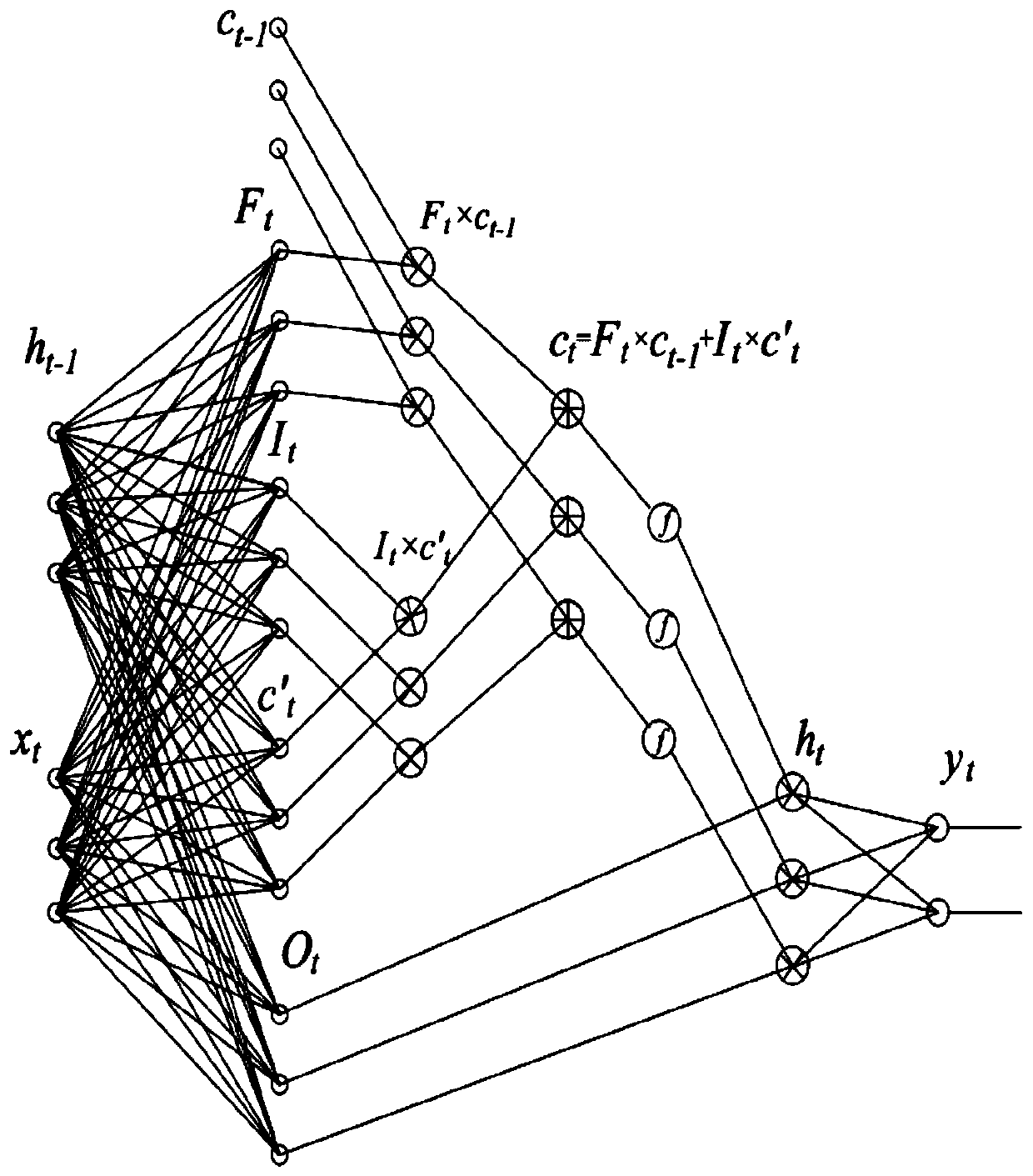Atmospheric pollution factor concentration space-time distribution prediction method and system
A technology of spatiotemporal distribution and prediction method, applied in prediction, analysis materials, measurement devices, etc., can solve the problems of inability to dynamically analyze distribution trends, a large number of monitoring equipment, inaccurate prediction of air pollution factor concentration, etc., to improve accuracy and timeliness performance, reduce monitoring costs, and improve accuracy
- Summary
- Abstract
- Description
- Claims
- Application Information
AI Technical Summary
Problems solved by technology
Method used
Image
Examples
Embodiment Construction
[0072] The principles and features of the present invention are described below in conjunction with the accompanying drawings, and the examples given are only used to explain the present invention, and are not intended to limit the scope of the present invention.
[0073] like figure 1 As shown, a method for predicting the temporal and spatial distribution of air pollution factor concentration includes the following steps,
[0074] S1. Construct a sparse feature vector based on the historical monitoring data of all stations in the monitoring area, and use the sparse feature vector as a factorization machine (a factorization machine is a factorization technology that combines the high prediction accuracy of factorization technology and feature engineering The flexibility in the factorization model is approached by a solution method similar to the linear regression model and the support vector machine, which is particularly effective for highly sparse feature vectors), and the o...
PUM
 Login to View More
Login to View More Abstract
Description
Claims
Application Information
 Login to View More
Login to View More - R&D
- Intellectual Property
- Life Sciences
- Materials
- Tech Scout
- Unparalleled Data Quality
- Higher Quality Content
- 60% Fewer Hallucinations
Browse by: Latest US Patents, China's latest patents, Technical Efficacy Thesaurus, Application Domain, Technology Topic, Popular Technical Reports.
© 2025 PatSnap. All rights reserved.Legal|Privacy policy|Modern Slavery Act Transparency Statement|Sitemap|About US| Contact US: help@patsnap.com



